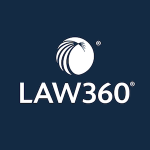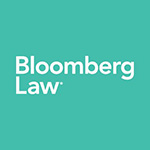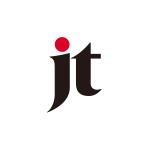Central to this framework are issues related to breach of contract, negligence, fraud, and statutory violations.
Companies can be held accountable under multiple theories of liability for failing to secure their software products and services.
Breach of Contract and Negligence
In the realm of software liability, breach of contract claims often arise when a company fails to meet the security standards outlined in agreements with clients or partners.
These breaches can include failing to implement promised security measures, neglecting to update software to address vulnerabilities, or misrepresenting the security features of a product.
Negligence claims, on the other hand, are based on the failure to exercise reasonable care in the development, implementation, and maintenance of software systems, leading to unauthorized account access, data breaches or other security incidents.
For example, in the Marriott data breach multidistrict litigation (MDL), consumers sued both Marriott and Accenture, Marriott’s reservation system contractor.
The court allowed certain negligence claims under Maryland, Connecticut, Florida, and Georgia law to proceed, illustrating the varied legal outcomes depending on specific allegations and jurisdictions.
In Affinity Gaming v. Trustwave Holdings, Inc., Affinity Gaming sued Trustwave, a cybersecurity firm, after a data breach.
Affinity Gaming alleged that Trustwave failed to identify and address vulnerabilities in their system, leading to a second data breach.
The court dismissed some claims but allowed others, including breach of contract, fraud, fraudulent inducement, and violations of the Nevada Deceptive Trade Practices Act, to proceed.
This case underscores the potential for significant legal repercussions when cybersecurity firms fail to adequately perform their duties.
Fraud and Deceptive Trade Practices
Fraudulent inducement and deception claims are common in software liability cases, particularly when companies make false or misleading statements about the security capabilities of their products.
These claims can be brought under state deceptive trade practices statutes or federal laws like the Federal Trade Commission (FTC) Act.
The FTC has the authority to pursue companies for “unfair and deceptive” practices, including those involving insecure software products that compromise consumer data.
Regulatory Standards and Enforcement
Regulatory bodies, such as the FTC, play a crucial role in enforcing cybersecurity and software liability standards.
The FTC’s Section 5 authority allows it to act against companies that fail to secure their products, even in the absence of direct consumer data breaches.
The FTC requires companies to implement comprehensive information security programs that address identified risks, conduct regular security assessments, and ensure third-party service providers adhere to strict security protocols.
A notable recent case involves the FTC’s action against Ring in 2023. The FTC alleged that Ring failed to prevent credential stuffing and brute force attacks, leading to unauthorized access to users’ cameras.
Ring settled, agreeing to adopt multi-factor authentication and conduct pre-launch vulnerability testing.
This case highlights the FTC’s robust approach to enforcing security standards even in the absence of direct consumer data breaches.
In addition to these measures, companies must comply with regulations such as the Cybersecurity Information Sharing Act (CISA) and 23 NYCRR Part 500, which mandate robust cybersecurity practices and reporting requirements.
The Cybersecurity Information Sharing Act (CISA) encourages the sharing of cybersecurity threat information between the government and private sector to enhance collective defense.
CISA emphasizes the importance of timely sharing and coordination to mitigate risks and respond to threats more effectively.
Meanwhile, 23 NYCRR Part 500, a regulation established by the New York State Department of Financial Services (NYDFS), requires financial institutions and other covered entities to implement and maintain a comprehensive cybersecurity program.
This regulation mandates specific measures such as regular risk assessments, encryption of nonpublic information, monitoring and testing of cybersecurity systems, and annual certification of compliance. Both CISA and 23 NYCRR Part 500 highlight the critical need for proactive cybersecurity measures and accountability in safeguarding sensitive information.
Chief Information Security Officers (CISOs) play a critical role in managing an organization’s cybersecurity strategy and ensuring compliance with relevant laws and standards.
Their responsibilities include developing and implementing security policies, overseeing security operations, and managing incident response efforts.
CISOs must also ensure that their organization’s security measures are robust and up-to-date. With these extensive responsibilities comes personal liability.
In cases of significant security breaches, CISOs can be held personally accountable for failing to implement adequate security measures.
This liability underscores the importance of CISOs staying vigilant and proactive in their approach to cybersecurity.
By integrating robust cybersecurity practices as mandated by regulations like CISA and 23 NYCRR Part 500, and maintaining proactive and vigilant oversight by CISOs, organizations can better protect themselves against the myriad threats in today’s digital landscape.
Artificial Intelligence and Machine Learning Deficiencies
The rise of AI and machine learning introduces new dimensions to software liability. AI systems, like traditional software, can have vulnerabilities that expose users to significant risks.
These risks are compounded by the complexity and opacity of AI algorithms and data sources, making it challenging to detect and mitigate potential security flaws.
The National Institute of Standards and Technology (NIST) has begun to address these issues through its AI Risk Management Framework, which provides guidelines for incorporating trustworthiness and security into AI systems.
Deploying AI systems with immature data, models and governance frameworks can lead to enforcement actions, especially when such exposures could have been reasonably anticipated.
Companies making claims about the robustness and performance of their AI models must ensure these claims are accurate and supported by their systems’ actual security capabilities to avoid being charged with deceptive practices.
Comprehensive Security Programs
To mitigate risks and comply with legal standards, companies must implement comprehensive security programs.
These programs should include:
- Governance Framework: Adopting a cyber security framework from which to guide and regulate cyber security best practices, following the basic tenants to Identify, Protect, Detect, Respond, Reсover and Govern.
- Risk Assessments: Conducting regular evaluations to identify and address security risks.
- Patch Management: Ensuring timely updates and remediation of software vulnerabilities.
- Intrusion Protection: Deploying systems to detect and prevent unauthorized access.
- Access Controls: Enforcing strict access protocols to protect sensitive information.
- Encryption: Securing data both in transit and at rest to prevent unauthorized access.
- Secure Development Practices: Integrating security into the software development lifecycle.
- Employee Training: Providing ongoing education on security best practices and protocols.
- Third-Party Monitoring: Vetting and monitoring the security practices of vendors and service providers.
- Incident Response: The process and ability to respond to an incident with the primary focus on mitigation of cyber security events and their expeditious remediation.
Equifax Case Study
The Equifax Data Breach case exemplifies the FTC’s stringent enforcement actions.
The FTC’s complaint highlighted significant security failures at Equifax, such as neglecting critical vulnerabilities, lacking intrusion protection measures, not segmenting servers and databases, storing sensitive data in plain text, and failing to provide adequate employee security training.
The FTC settlement required Equifax to implement a comprehensive information security program with specific measures: establishing effective patch management, implementing intrusion protection and file integrity monitoring, enforcing access controls with multi-factor authentication, encrypting sensitive data, ensuring secure development practices, and conducting regular security training and vulnerability testing.
Equifax also agreed to provide up to $700 million in monetary relief. This case illustrates the FTC’s rigorous enforcement actions, mandating detailed security protocols and holding companies accountable for data protection failures.
Medical Devices, Applications, and Services
The landscape of software liability extends significantly into the realm of medical devices, applications, and services.
With the increasing prevalence of digital health solutions, including mobile platforms and wearable devices, ensuring the security and reliability of these technologies is paramount.
Medical devices, such as insulin pumps, pacemakers, and wearable fitness trackers, often collect and transmit sensitive health data, making them prime targets for cyberattacks.
The Food and Drug Administration (the FDA) has emphasized the importance of cybersecurity in medical devices, issuing guidelines that require manufacturers to implement comprehensive security measures throughout the device lifecycle.
These measures include pre-market security assessments to identify and mitigate potential vulnerabilities, continuous post-market monitoring to detect emerging threats, and timely updates to address identified issues.
Compliance with these guidelines is crucial not only to ensure patient safety but also to avoid legal repercussions.
Mobile health applications, which allow users to monitor and manage their health conditions, are also subject to stringent security requirements.
The Health Insurance Portability and Accountability Act (HIPAA) mandates the protection of personal health information (PHI) and sets standards for the secure transmission of electronic health data.
Companies developing these applications must ensure robust encryption, secure authentication mechanisms, and regular security audits to comply with HIPAA and other relevant regulations.
Wearable devices, such as smartwatches and fitness trackers, represent another significant area of concern.
These devices often sync with smartphones and cloud services, creating multiple points of vulnerability. Ensuring the security of the data collected and transmitted by these devices involves implementing end-to-end encryption, secure data storage practices, and rigorous access controls.
Additionally, manufacturers must provide clear instructions to users on how to maintain the security of their devices, including regular software updates and the use of strong passwords.
The 21st Century Cures Act further reinforces the need for stringent security measures in digital health technologies by promoting the secure exchange of electronic health information.
This legislation encourages interoperability among health IT systems while ensuring that data protection remains a top priority.
Companies in the health tech space must navigate a complex regulatory environment to ensure their products are both innovative and secure.
Contact Us
At Dilendorf Law Firm, our Software Liability Litigation Lawyers focus on helping clients navigate the complexities of software liability, cybersecurity, and AI deficiencies.
We provide experienced legal counsel to ensure our clients are protected and their rights are upheld in an increasingly digital world.
Whether you are a victim of a cybersecurity attack, dealing with insecure software, or facing issues related to AI, our team is here to provide the legal support you need.
Please reach out to us at info@dilendorf.com to schedule a consultation.
Resources










































